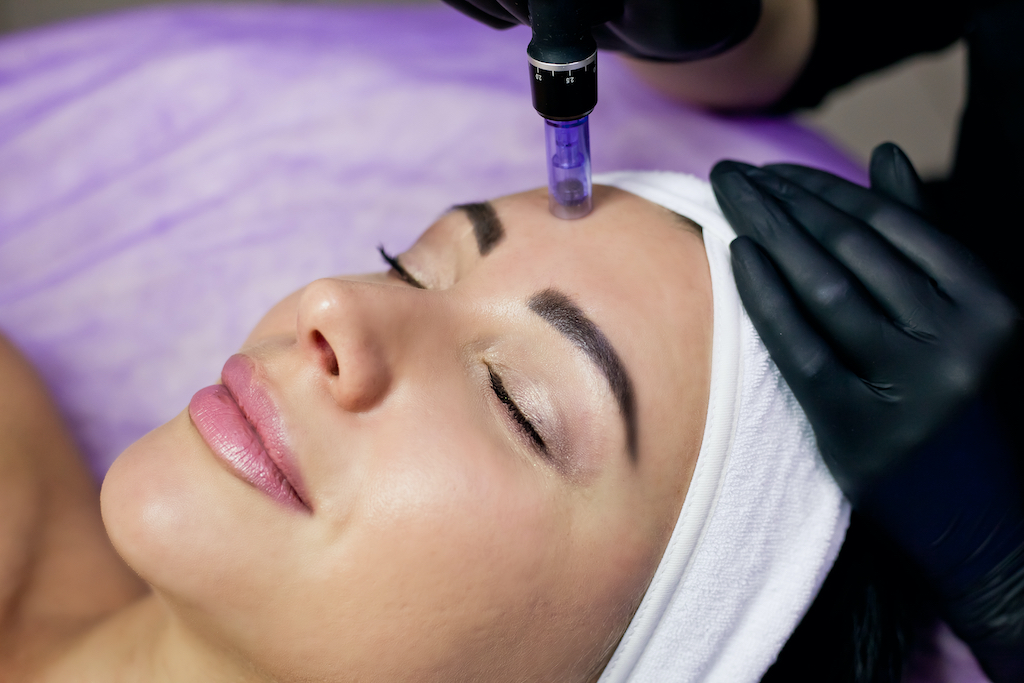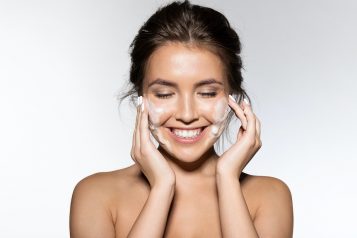Mamina Turegano, MD, is a triple board-certified dermatologist, internist, and dermatopathologist. Dr. Turegano has a special interest in evaluating how nutrition, lifestyle, sleep, and other environmental factors can play a significant role in inflammation, aging, and cancer. She enjoys incorporating holistic practices in her patients who deal with anything ranging from acne to warts. Dr. Turegano plays an active role in social media, particularly Instagram and TikTok. In addition to providing skincare tips and knowledge on dermatological conditions through her social media platforms, she shares her Japanese mom’s anti-aging tips, which incorporates holistic and traditional Japanese beauty practices.
Haute beauty sits down with Dr. Mamina Turegano, skin expert representing the New Orleans market to learn about her top three tools to correct and improve skin texture.
 Photo Credit: ShutterstockImproving skin texture begins with cell turn over and collagen renewal. “Our skin naturally exfoliates every 30 days, but it kind of gets sluggish. Not everything turns over as effectively and as efficiently as we age, especially after our 20’s, and going into our 30s,” says Dr. Turegano.
Photo Credit: ShutterstockImproving skin texture begins with cell turn over and collagen renewal. “Our skin naturally exfoliates every 30 days, but it kind of gets sluggish. Not everything turns over as effectively and as efficiently as we age, especially after our 20’s, and going into our 30s,” says Dr. Turegano.
“I mean, my first go-to with anyone when it comes to uneven texture is always going to be a good skin care regimen. They can do all the procedures they want, but if they’re not doing like a daily skincare regimen, then they’re not going to get as much out of these procedures,” she adds.
Chemical Peels
One of the more well-known methods to correct and improve fine lines, acne scars is an in-office chemical peel by Dr. Mamina Turregano. With numerous types of peels with ingredients like trichloroacetic acid, glycolic acid, and salicylic acid.
“Chemical peels can do so much. They can help to even out your skin tone, skin texture, and reducing scarring. It will help to stimulate the collagen production, elastin production, shrinking your pores. So, it’s just kind of multifaceted, which is awesome,” says Dr. Turegano.
The skin is cleaned and prepped, the peel is left on for a certain number of hours or minutes. Then, the patient is sent home with an instruction booklet as well as aftercare products to use the following week.
However, Dr. Turegano emphasizes that chemical peels are not great for those who do not have a lot of downtime. “If you’re really trying to be your best or look your best for something like a wedding, I do recommend getting monthly treatments leading up to the wedding but if you want to look good all the time, I recommend getting a chemical peel like every six to eight weeks in general in your life,” she says.
 Photo Credit: ShutterstockMicroneedling
Photo Credit: ShutterstockMicroneedling
Micro-needling is an in-office treatment that uses a collection of tiny needles to puncture the skin. The act of puncturing increases collagen production and allows for collagen remodeling to tighten and smooth out the skin.
“I love using it for acne scars that are mild or look like small divots in the skin. I also really like it for really fine lines like lip lines, lines around the mouth, very fine cheek lines, and for perioral lines too,” she says.
Micro-needling is typically used for fine lines and shallow acne scarring and typically not for deep acne scarring.
The recovery time for in an in-office micro-needling treatment is as little as 24 hours so it is used for patients that want to see results quickly. The most important part of after-care is the avoidance of the sun to your skin. Dr. Turgano typically recommends 3 to 5 treatments spaced apart for her patients.
Laser Treatments
Laser treatments work by heating up the upper layers of the dermis and stimulating collagen renewal. “When you have collagen remodeling, that can cause tightening and loosening of the skin surface. So, that comes into play if you have uneven skin texture from acne scars,” says Dr. Turegano.
Other types of lasers can also help break up the dirt, oil, and bacteria in the pores. Laser treatments are done in-office with Dr. Turregano, how many treatments needed will be determined at the time of the consultation.
For more information, visit Dr. Brian A. Levine's social media:

























